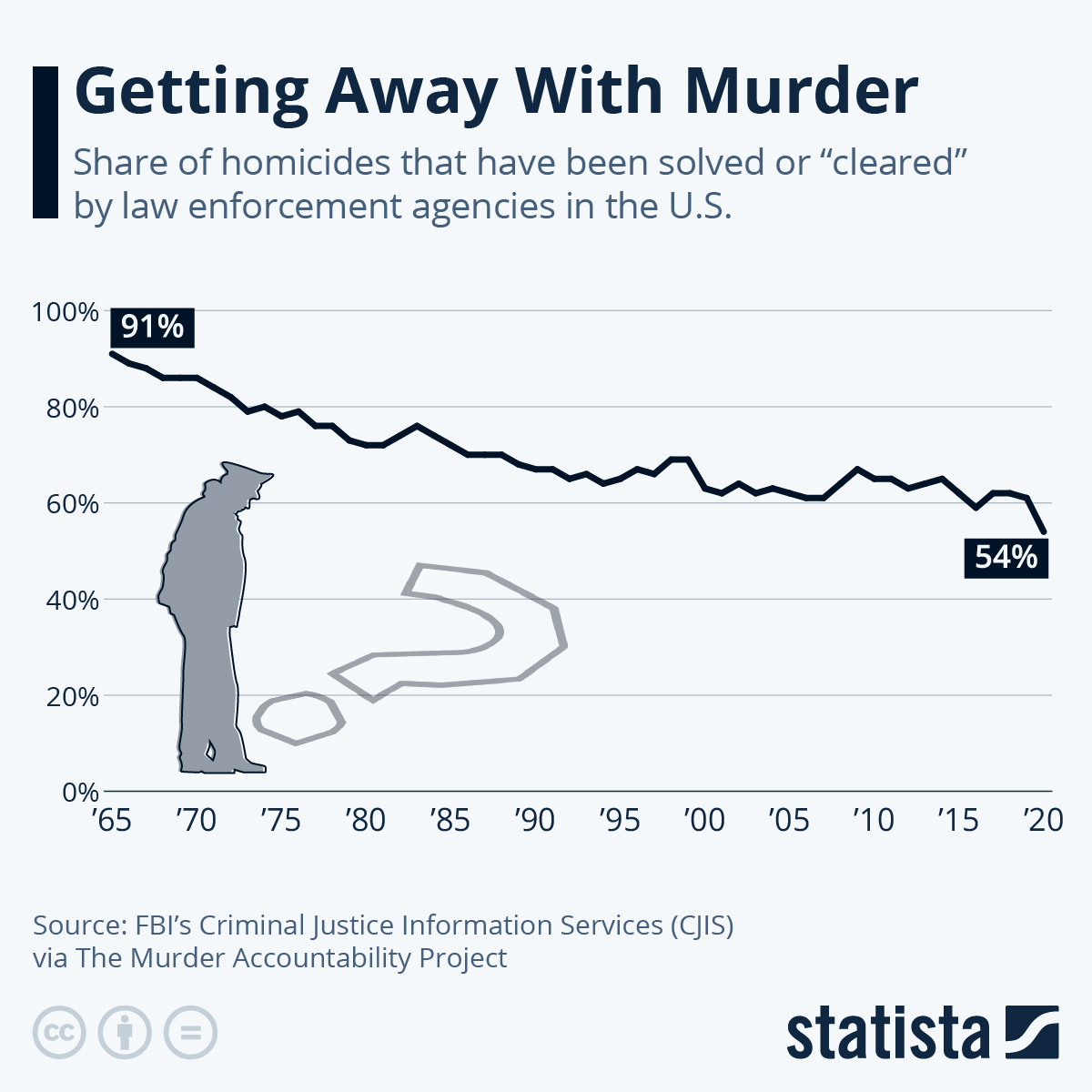A case is “cleared” when either it is solved and the suspected killer has been arrested and formally charged or when the case has been deemed an “exception”, which means the assailant cannot be arrested, whether that’s because they are already dead, imprisoned elsewhere, or for another reason.
The sudden drop in 2020 can partly be attributed to the fact that homicides saw a nearly 30 percent increase that year, according to the FBI’s 2020 Uniform Crime Report, which meant police and sheriff's departments were overwhelmed with cases.
The longer downward trend, however, is likely the result of a number of reasons.
For instance, analysts argue that data collection in the 1960s and 1970s is not fully reliable and so their clearance levels are likely exaggerated.
Meanwhile, more recently, a decline in police trust and willingness to work with law enforcement are also possible factors.
Jeff Asher, a crime analyst, explains in an interview with The Atlantic, that the rise in gun violence is a main contributor to the trend. Since guns can be shot from further away, gunshot homicides tend to be more difficult to solve.
“The nature of murder in America is changing in ways that we don’t really talk about enough”, he explains.
“You’ve got a bunch of cities where firearms make up 80 to 90 percent of murders today. That is the main driver. Guns make murders much harder to solve, and it leads to lower clearance rates everywhere.”
Judge the source on that last one...
https://www.zerohedge.com/political/getting-away-murder-us

No comments:
Post a Comment
Note: Only a member of this blog may post a comment.